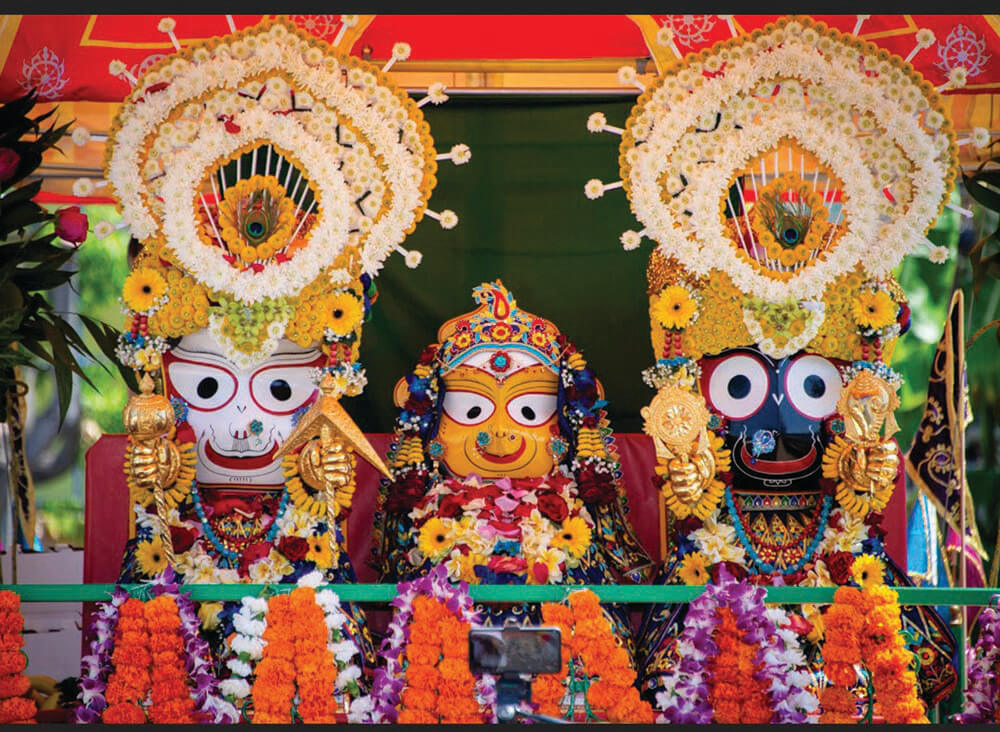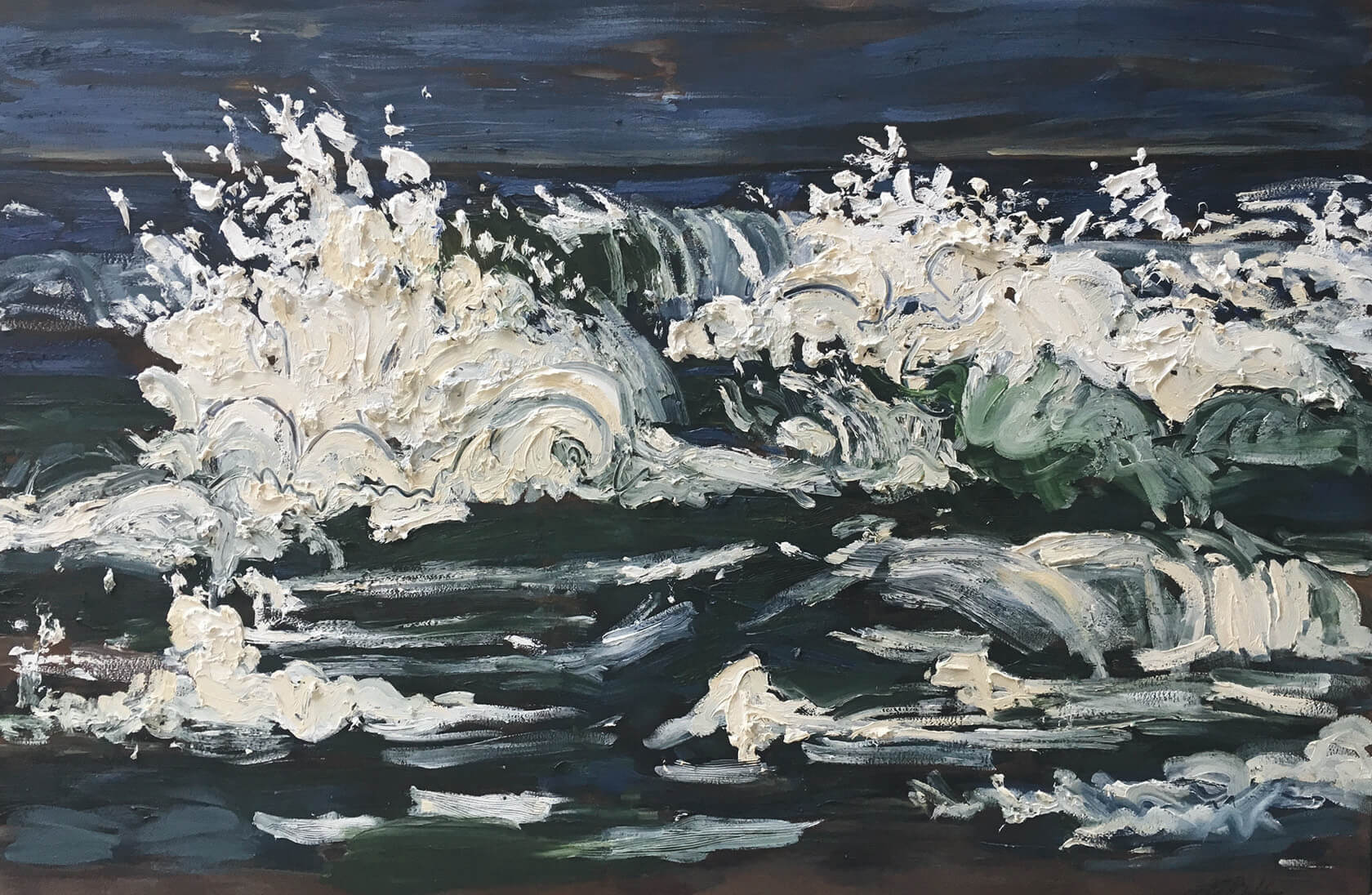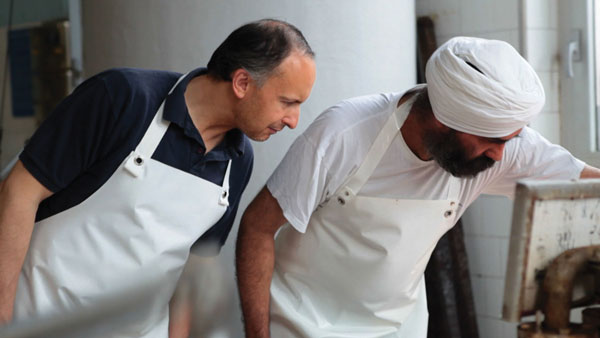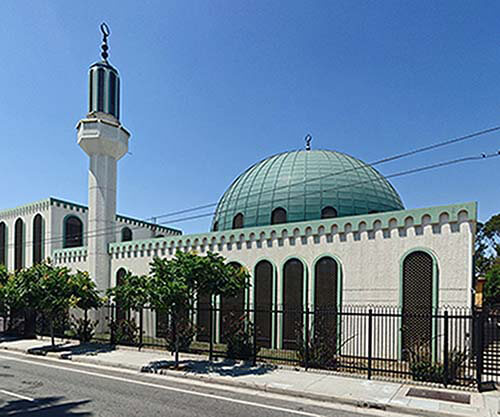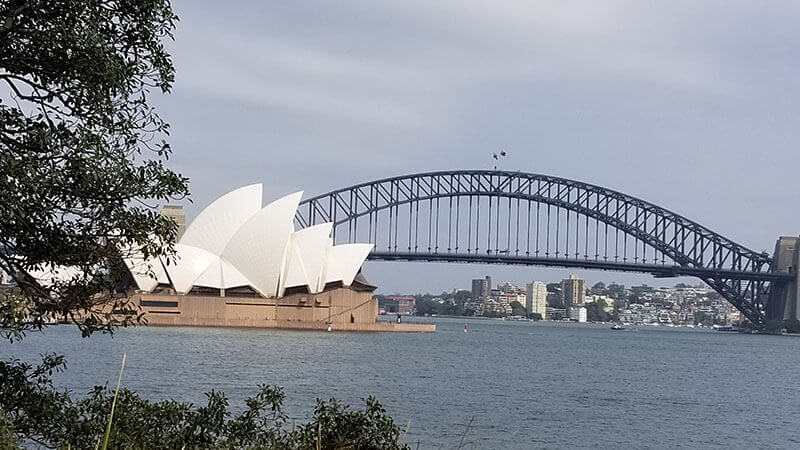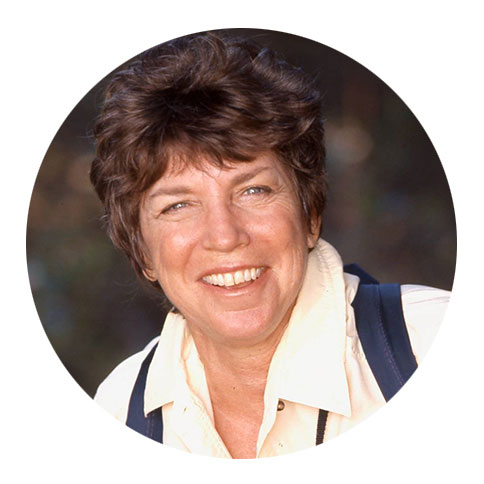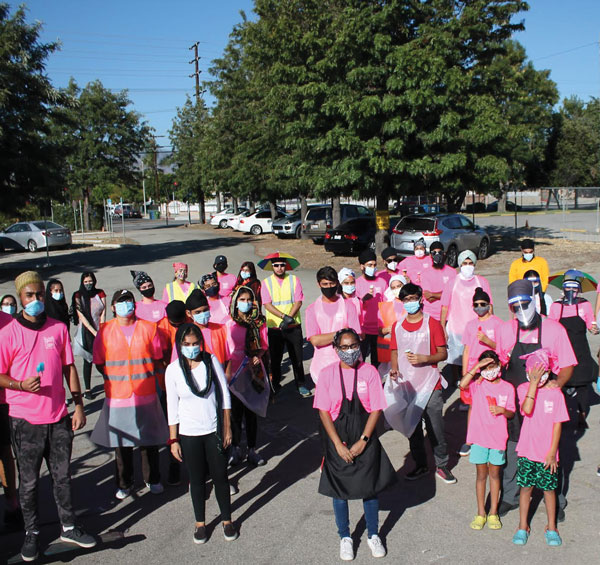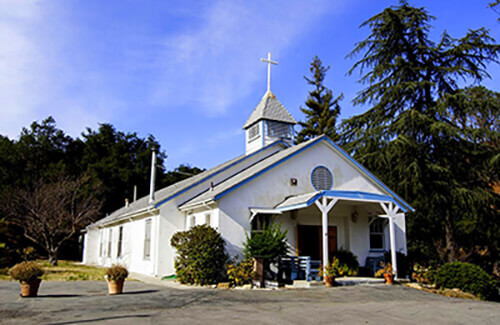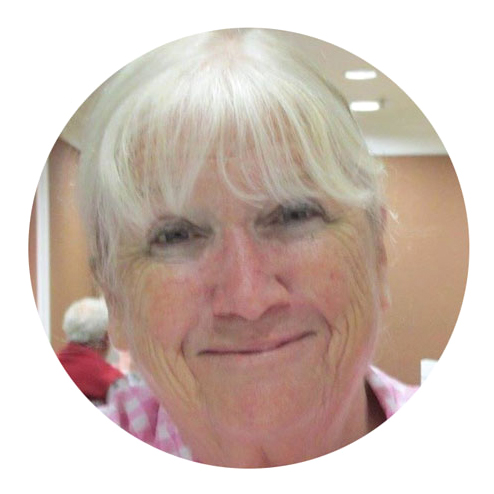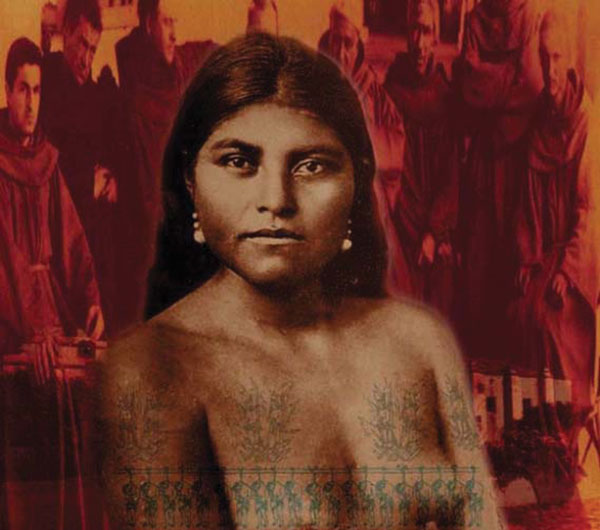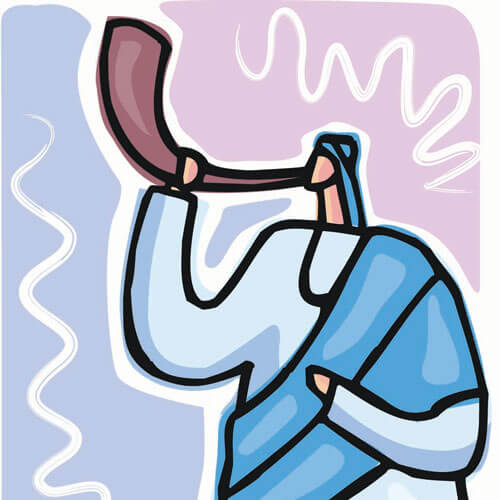Optimism & Joy Mark Festival Despite Pandemic | |
Optimism & Joy Mark Festival Despite PandemicReimagining the Indian Festival of the Chariots required protective masks, drive-through worship, and to-go boxes as the Hare Krishnas honored the Lord of the Universe.
The Ratha Yatra, or Indian Festival of the Chariots, should have overtaken a large portion of Venice Beach on July 2, as it has every year. This year the pandemic made a gathering of such proportions impossible.
Prior to social distancing, the celebration, conducted by the International Society of Krishna Consciousness (ISKCON), has involved three four-story chariots bedecked in flowers being pulled by festival goers from the Santa Monica Civic Auditorium to the Ocean Front Walk Plaza. The chariots carry a trinity of deities and their attendants. At the final Venice Beach destination, approximately 40,000 celebrants gather to spend the day honoring Lord Jaganath, the Lord of the Universe, his older brother, Baladev, and his younger sister, Subhadra. Obviously, this could not happen in 2020.
The Ratha Yatra was brought to the United States in 1967 by His Divine Grace A.C. Bhaktivedanta Swami Prabhupada, the founder of the International Society for Krishna Consciousness, better known to most as the Hare Krishnas. It has been held in Los Angeles every year since 1977, but because of COVID-19, it had to be completely reimagined.
On July 30, 2020, everyone on the temple’s mailing list received an announcement that Ratha Yatra would go on, sort of. The main chariot would be parked in the lot of the Culver City temple, and the deities would be carried by devotees from the temple to the chariot. Darshan, the opportunity to view the deities, would be conducted on a drive-through basis. Each car would get one minute in front of the chariot, and then it would be ushered forward to receive free prasad, food offered first to the deities and then served, on this occasion, in to-go boxes. Lord Baladev being paraded from the temple by devotee. Photo by Iskcon |
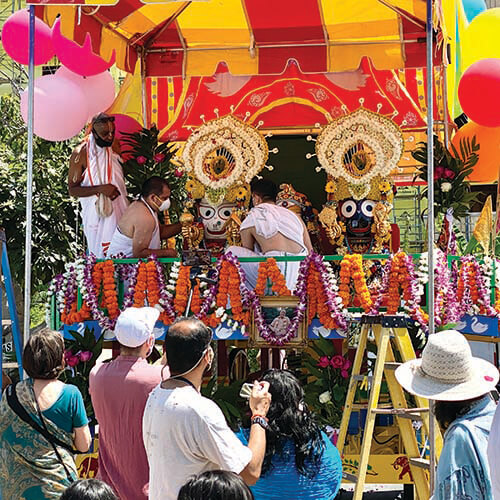 Devotees make the final adjustments to ensure the comfort of the deities. Photo by Kait Leonard Unfortunately, people not on the mailing list were unlikely to hear about the plans to hold the modified festival.
Drive-through worship began at noon, but by 11 a.m., festivities were well under way. Women wearing saris the colors of jewels and men in traditional Indian attire gathered in front of the temple. They wore masks, and except for those who live in the ashram, maintained social distance. Everyone participated in lively kirtan, a form of call-and-response chanting. Some of the young men beat on drums, while a few older women played finger cymbals. Most men jumped up and down and women danced. Everyone from kids barely talking to older people leaning on canes chanted the Hare Krishna mantra, the one made famous by George Harrison in his song “My Sweet Lord.”
As the deities were paraded from the temple, followers threw handfuls of rose petals and stood with arms raised indicating their complete surrender to the divine. The deities were seated on the chariot where attendants made them comfortable and then fanned them to keep them cool in the midday sun. Hare Krishnas believe the divine is alive and present in statues or any other representation of the deity.
By 3 p.m., more than 900 plates of food had been provided to attendees using the drive-through line, according to a spokesperson for the International Society of Krishna Consciousness (ISKCON) spokesperson. This number does not reflect the total for the festival, as it does not consider the people from within the temple community. Still, the final number did not even approach the expected tens of thousands who would have gathered in Venice, if not for the pandemic.  | 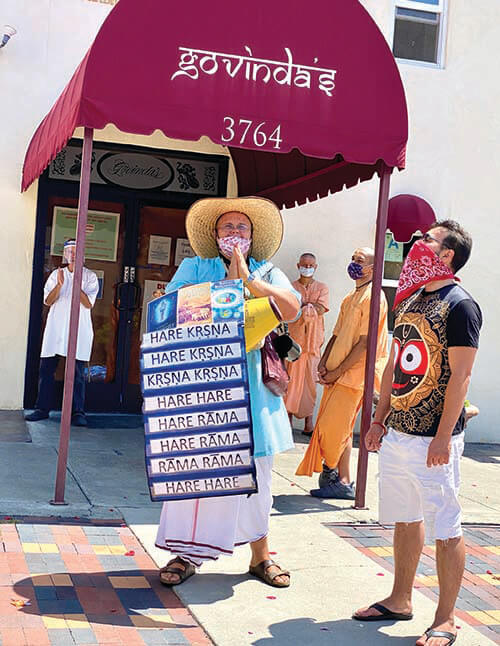 Participants from within the ISKCON community. Photo by Kait Leonard Even in India, where more than one million people attend yearly, COVID-19 stole the show and forced the scaling back of the Ratha Yatra. The request to hold the festival went all the way to the Supreme Court which finally granted permission for a significantly modified version to be held in Puri, Odisha, a city on the eastern coast of India. The court restricted the gathering to only 500 devotees per each of the three chariots, and all participants were required to provide a negative COVID test before being cleared to attend.
As the Culver City festival began drawing to a close, Lord Jaganath, Baladev, and Subhadra continued to smile down at the masked worshippers who fingered prayer beads and repeated their mantra. Children had begun sweeping rose petals from the front of the temple, and the last of the cars filed past to receive blessings and prasad.
Though the coronavirus dimmed the grandeur of the celebration, Lord Jaganath must have been pleased by the incredible resilience and optimism of the human spirit.  | | | | | | | | | | | | | |
|
|
|
|
|





